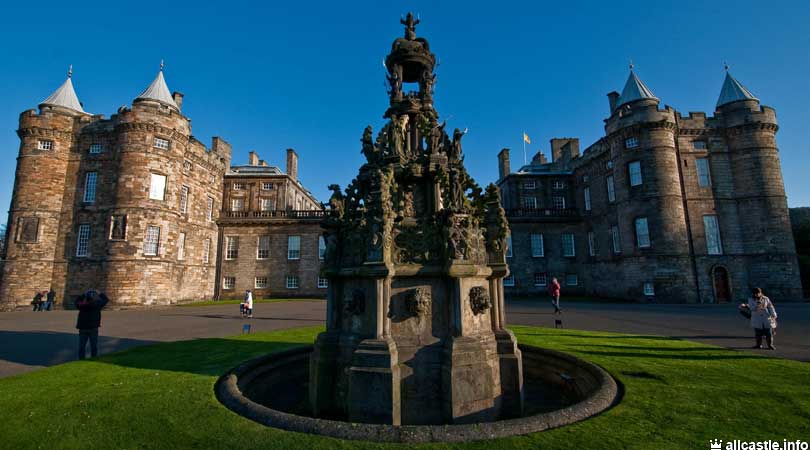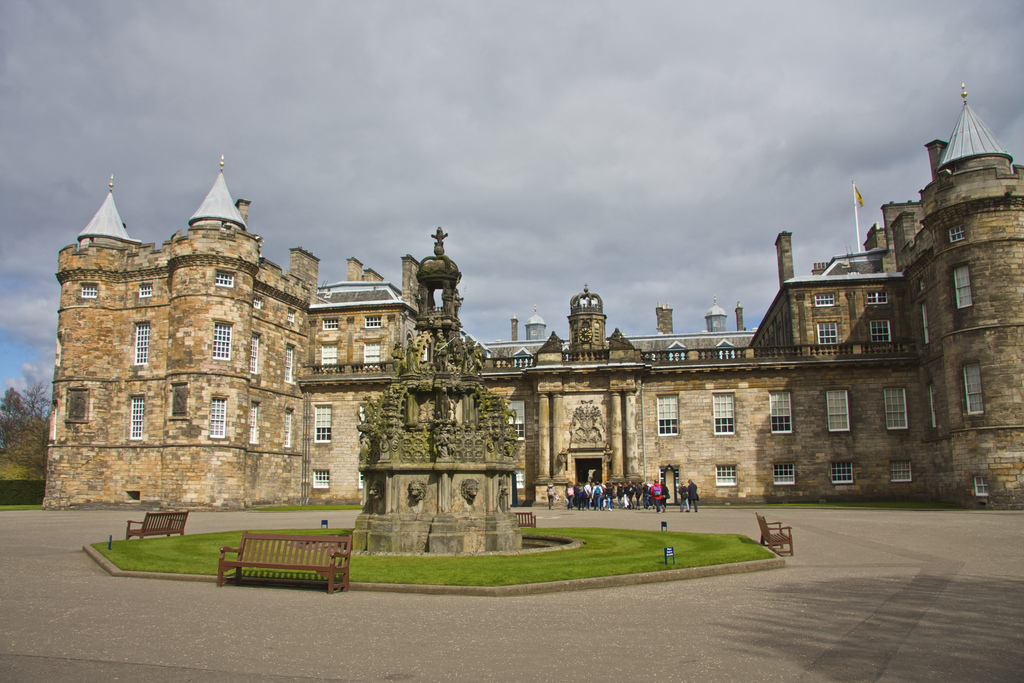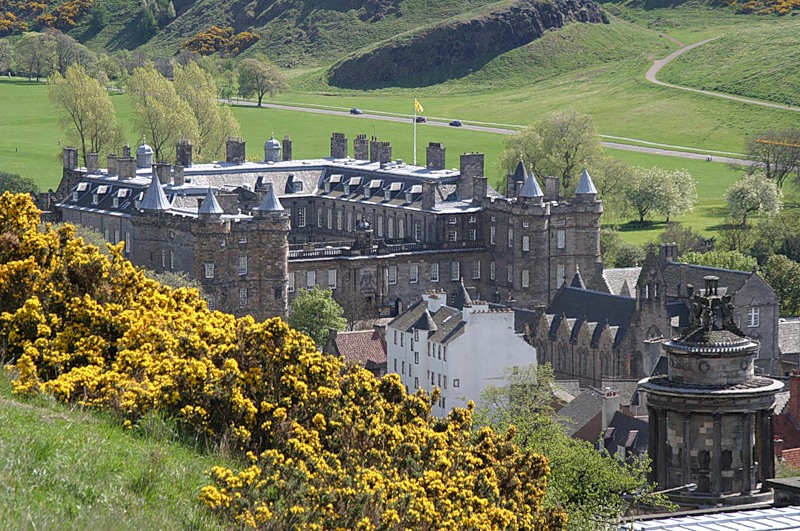The Palace of Holyroodhouse (/ˈhɒlɪˌruːd/ or /ˈhoʊlɪˌruːd/), commonly referred to as Holyrood Palace, is the official residence of the British monarch in Scotland. Located at the bottom of the Royal Mile in Edinburgh, at the opposite end to Edinburgh Castle, Holyrood Palace has served as the principal residence of the Kings and Queens of Scots since the 16th century, and is a setting for state occasions and official entertaining.
Queen Elizabeth spends one week in residence at Holyrood Palace at the beginning of each summer, where she carries out a range of official engagements and ceremonies. The 16th century Historic Apartments of Mary, Queen of Scots and the State Apartments, used for official and state entertaining, are open to the public throughout the year, except when members of the Royal Family are in residence.
The palace as it stands today was built between 1671-1678 in a quadrangle layout, approximately 230 feet (70 m) from north to south and 230 feet (70 m) from east to west, with the exception of the 16th-century north-west tower built by James V. Sir William Bruce designed the 3-storey plus attic Baroque palace for Charles II upon the restoration of the monarchy. The principal entrance is located on the west front in a recessed 2-storey range that links the 16th-century north-west tower with a matching south-west tower with three ball-finialled, conical bell-cast roofs. The entry gateway is framed by massive coupled Roman Doric columns, with the carved Royal Arms of Scotland and an octagonal cupola with clock-face above.
The north and south fronts have symmetrical 3-storey facades that rise behind to far left and right of 2-storey range with regular arrangement of bays. General repairs were completed by the architect Robert Reid between 1824-1834 that included the partial rebuilding of the south-west corner tower and refacing of the entire south front in ashlar to match that of the east.The east front has 17 pilastered bays with superimposed columns at each floor. The ruins of the abbey church connect to the palace on the north-east corner. For the internal quadrangle, Bruce designed a colonaded piazza of nine arches on the north, south and east facades superimposed with columns from the three classical orders to indicate the importance of the three main floors. The plain Doric order is used for the services at ground floor, the Ionic order is used for the state apartments on the first floor while the elaborate Corinthian order is used for the royal apartments on the second floor.
Architectural historian Dan Cruickshank selected the palace as one of his eight choices for the 2002 BBC book The Story of Britain's Best Buildings.












